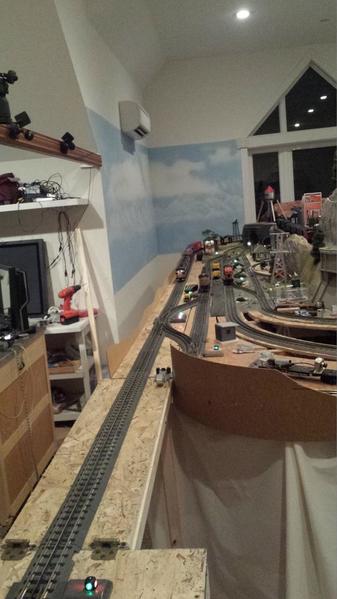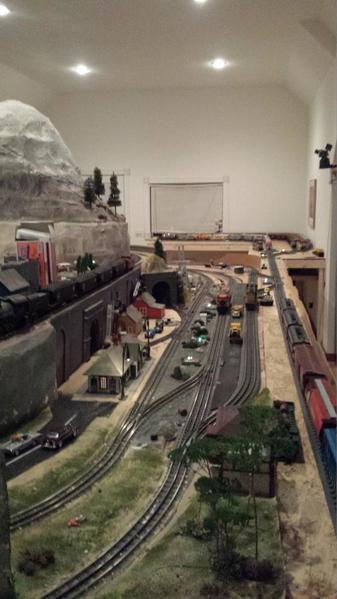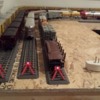I have a z 4000 transformer Output 1 feeding a tiu through a fixed output on a large track. The track has 8 engines/trains sitting on various spurs and yard tracks. Very few of the rolling stock have lights.
The output 2 drives TIU channel 2 fixed output to another large isolated but interconnected oval of sorts.
A second brick power supply powers TIU variable 1 in DCS mode to another large interconnected but isolated oval.
With the engines off, the amperage on output 1 of the transformer shows 3.1 to 3.4 amps. I do power the turnouts on this track( with track power) but when I remove the switch blocks from the turn outs nothing changes. All trains start up and function normally. The exception is if just I startup 6 or more engines one at a a time the current ramps up to 8 amps indicated on the Z4000 readout. The seventh engine start shuts down the transformer.
I guess I can understand the too many engines issue, but what can be causing the 3.4 amps with nothing running. Or is this typical.
I don't remember seeing this before until just recently. Any suggestions where to look for the power draw. A few accessories are connected to the accessory post on channel 1 but they are mostly LED's.
Skylar
.











